f you are a business visionary leader, owner, founder, co-founder or partner and you are feeling stuck, frustrated, overwhelmed or out of control, we can fix this by getting you the help and support you need. Often when I talk with business visionary owners who have built their business up from the ground, they tell me they are feeling like they have hit a ceiling. To break through that ceiling they are searching for a way to get a great second in command with the right business chemistry to free up their time and allow the business to move to the next level.
However, perhaps you are unsure about how to structure that second-in-command position, is it a President, General Manager or COO? How do you define the roles and accountabilities that go with the position?
In EOS one of the first steps we go through when working with our clients is to take a big step back and look at the right structure for the organization. We have a principle we use called: Structure First, People Second. This is not to say people are unimportant, but what we are emphasizing is that we are going to work to get the right structure for the business defined, and then we are going to work on getting the right people into the right seats to fuel business chemistry within that structure.
How do you define the right structure for your business?
When we are working on the right structure we use a tool call the accountability chart. The accountability chart starts off with a basic assumption, which is that every business needs three major functions, being: Sales with Marketing, Operations and Finance. Then to pull these functions together we define a fourth major function we call an Integrator.
The Integrator is the person in the organization who beats the drum, is the glue that holds everything together, drives accountability and harmoniously integrates the leadership team to achieve vision. The Integrator is the person who is really running the nuts-and-bolts of the business on a day to day level.
Then, as the organization grows then there is often a fifth major function defined that we call the Visionary.
Visionary leaders are the big idea people. They love staying at 30,000 ft. They come to each meeting with 20 new ideas and are creative problem solvers. They also love managing the big relationships for the business. Unfortunately, the things Visionary leaders often don’t like doing are getting down in the trenches and having the tough conversations in the business.
The Visionary Integrator concept was developed by EOS founder and Traction author Gino Wickman, and is one of the foundational concepts he used to work with his father and turn around their business. The Visionary Integrator concept is really talking about two distinct types of leaders in a small business. One sees the future, the other makes it happen. These two roles are fundamentally different, but when a business can leverage both roles, it can be amazingly powerful business chemistry.
Famous examples of Visionary Leaders and their Integrators
Some famous examples that you may be familiar to you are:
Henry Ford and James Couzens: While Ford may have invented the automobile production line, it was James Couzens as General Manager whose business acumen is credited with building the company in the success it was. Couzens later went on to become Mayor of Detroit and then a United States Senator.
Ray Kroc and Fred Turner at McDonalds: While Kroc had the grand vision for McDonalds, but it was Fred Turner who established the strict guidelines, including that fries had to be precisely 0.28 inches thick, and that exactly ten patties had to be formed from each pound of beef. Consistently adhering to these processes and guidelines allowed the company to replicate its operations and scale up to the giant we know now.
At Disney: it was Walt who was the visionary dreamer and his older brother Roy ran the business side and finances.
Of course while Ford, McDonalds and Disney are all huge corporations now, it was the Visionary Integrator partnership at the beginning that provided the fuel for the starting businesses to scale up and grow so successfully.
What are the benefits of a Visionary, Integrator relationship?
As EOS Implementers we witness the beneficial results achieved through defining and clarifying these two vital Visionary and Integrator roles. With them, and the right business chemistry, companies can grow faster, the leadership team operates with increased cohesiveness and the team experiences a lot more fun.
Importantly, when a Visionary leader has a great Integrator to work with them, they are freed up to unleash their creativity to grow their organization and pursue opportunities in their industry.
Strategic Coach Dan Sullivan has an important concept here in working with entrepreneurs and visionaries. His concept is “Only do what you love and are really great at”. So, what are you really great at? In Dan’s work he delves into helping entrepreneurs define their Unique Abilities. Your Unique Ability is you at your very best, it’s the hard-wired set of natural talents that you are passionate about making use of as much as you can in your life. When you define your Unique Abilities, then structure your role in the company around them, then you can really start operating at your peak and creating a lot more value in the world.
Detroit Visionary leader and lawyer Mike Morse reflects on building his company in his book Fireproof: “When you look at the growth trajectory of my firm, it becomes clear that I was holding the firm back when I insisted on managing everything. I couldn’t do what I thought I should be doing, and our growth was limited as a result. When I uncapped the firm and focused on what I was good at and loved to do, we flourished.”
As a Visionary leader and business owner, it is not uncommon that we are so busy, we are beset by 136 issues coming at us every day, so we feel overwhelmed and frustrated because we don’t have the time to be the Visionary leader we want to be.
This is where defining the role for an Integrator to work with you can be so impactful. A great Integrator fulfills their role by being able to harness the day-to-day of the business and create organizational clarity, accountability, focus and harmony. They pay attention to the details and get the trains running on time so the Visionary doesn’t have to. A great Integrator filling that role is someone with a very different set of skills from the Visionary, but they are operating in their own sweet spot, in their own unique ability to orchestrate the effectiveness of the organization.
How can a Visionary leader find a great Integrator?
If you are a Visionary leader and business owner and you are reading this and thinking there might just be a better way here to having the life you want, there are resources that can help. For example, executive search firm Keystone Search in Minneapolis runs on EOS themselves and specializes in finding the right Integrator to fuel your business. If you already have an Integrator in mind, they have assessments based on their experience to help you determine if you have the right candidate for the role you are considering.
Using a Professional EOS Implementer like myself to help you implement a structured system in your business can help you crystallize how to find, form and manage the business chemistry between a Visionary leader and Integrator. When we don’t get the roles and accountabilities clear, then we see tension and frustration build up in this relationship of two people who are wired so differently from each other. As an outside teacher, facilitator and coach, I am that independent third party who helps your leadership team discover and define their roles and accountabilities. When everyone is on the same page and crystal clear about what they are accountable for, your leadership team will have a new level of impact on your company, your employees, your customers, your clients and, ultimately, help you thrive, even in times of crisis.
Additional resources for Visionary leaders:
If you would like to learn more, Gino Wickman and Certified EOS Implementer Mark C. Winters wrote a book about the Visionary Integrator relationship, called RocketFuel. The title comes from one of Mark Winter’s clients who was describing just how effective the relationship can be when it is structured right. The first chapter of RocketFuel is available as a free download from our EOS Worldwide site, and more resources are available at the new RocketFuel University.



